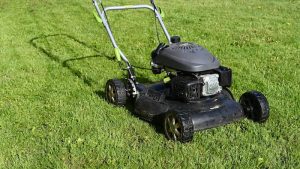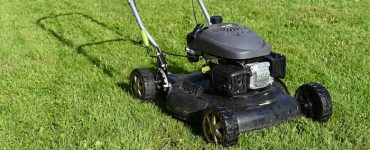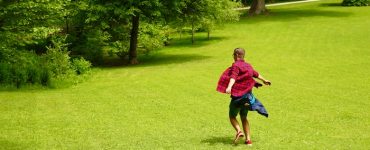In most cases, homeowners choose to roll or aerate their lawn first before using a lawn mower. Lawn care experts say that rolling or aerating the soil helps break up clumps and promote better root growth. Rolling also smooths the surface of the turf, which makes it easier for a lawn mower to cut. Aeration is similar to rolling in that it breaks up clumps and promotes better root growth. However, instead of smoothing the turf surface, aeration creates small air pockets that help improve drainage.
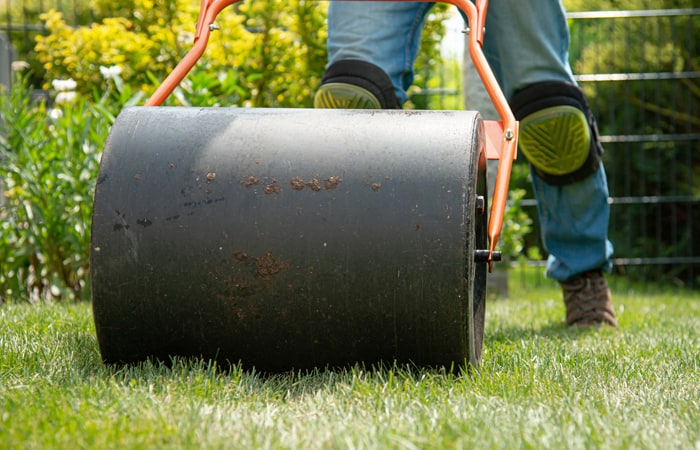
Difference Between Rolling and Aerating Lawn
Aerating lawns and rolling lawns are two common types of lawn care. They both work to improve the look and health of your lawn, but there are some key differences you should know about if you’re planning on using one over the other.
What Is Lawn Rolling?
Lawn rolling can be a fun and easy way to improve the appearance of your lawn. It is a simple process that involves rolling the grass several times with a lawn roller. This will help to smooth out the turf and make it look greener. Rolling lawns also helps to keep the lawn free from debris and pests, which can help to improve its health overall.
Benefits of Lawn Rolling
Lawn rolling may not be the first thing that comes to mind when you think of taking care of your lawn, but it can actually be a very beneficial activity. Here are 4 benefits of lawn rolling:
Help Reduce Weeds
Lawn Rolling is a popular way to reduce weed growth. Rolling the lawn causes the weed seeds to break open and die. This process is called germination inhibition. Lawn rolling can also help remove other unwanted plants and debris from the lawn, which in turn will improve the appearance of the lawn.
Improve the Appearance of Your Lawn
Lawn rolling is a simple and affordable way to improve the appearance of your lawn. Rolling the lawn evenly and repeatedly helps remove any accumulated soil and leaves, making the grass look smoother and brighter. Rolling also stimulates new growth, which results in a more vibrant lawn.
Increases the Lifespan of Your Lawn
Lawn rolling can increase the lifespan of your lawn by retaining water in the turf. Rolling also smooths out the surface, which helps prevent weed seeds from germinating. Additionally, rolling helps to break up compaction and increases air and moisture penetration into the soil.
Helps Break up Clumps in The Grass
Rolling the lawn will help loosen up the soil and make it easier to remove clumps with a garden rake or hoe. This process also aerates the soil, which helps improve the overall health of your lawn.
Drawbacks of Lawn Rolling
Lawn rolling is a popular gardening technique that can be used to make your lawn look greener and more healthy. However, there are some potential drawbacks to lawn rolling that should be considered before implementing it into your garden plan. Here are 4 of the most common disadvantages of lawn rolling:
Can Damage the Turf
When you roll a lawn, you flatten the grass and create divots. This can cause the turf to become weak and susceptible to other types of damage, such as from weed invasion or flooding. Rolling a lawn also can lead to decreased air circulation, which can cause fungal growth and root decay.
Can Be Time-Consuming
Lawn rolling can be time-consuming because it requires a lot of energy. Rolling the lawn requires a lot of energy because you have to use your muscles to move the lawn mower around. Lawn mowers are big and heavy, so it takes a lot of energy to push them around.
Can Be Hard on Your Back
The back is a very important part of the body. It helps us to move and function everyday. When we are trying to do something that requires a lot of movement, like lawn rolling, it can be hard on our back if we don’t prepare for it. One way to prepare for lawn rolling is to do some stretching beforehand to warm up the back muscles. Another thing to consider is how much weight you are putting on your back when you are rolling.
Can Be Noisy
Lawn rolling is a physical activity that can be done to improve agility, coordination, balance, and strength. The noise that is created during lawn rolling can be attributed to the repetitive impact of the individual’s body against the ground. This impact can be heard by others in close proximity and may cause them discomfort or irritation.
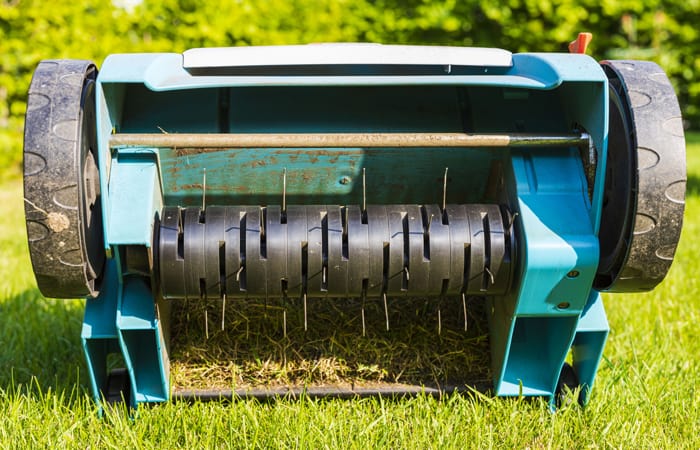
What Is Lawn Aerating?
Lawn aerating is a process of using a lawn aerator to create an opening in the turf, called a vent, and then blowing air through the opening to help break down the soil and improve air flow. Lawn aerating can help reduce the number of weeds, improve plant growth, and make your lawn look greener.
Benefits of Aerating Lawn
When it comes to keeping your lawn healthy and looking great, aerating is one of the most important steps. Here are 5 benefits of lawn aerating that you should know:
Helps to Break up Compacted Soil
Lawn aerating helps to break up compacted soil, which in turn helps to improve the soil’s texture and provide better drainage. Additionally, lawn aeration helps to stimulate the growth of plants and improve the overall health of the turf.
Makes It Easier for New Grass to Grow
Lawn aerating helps to improve the soil structure and drainage by breaking up compacted soils. This will make it easier for new grass to grow since it will be able to access more oxygen and nutrients. Additionally, broken up soils will allow water to seep through more easily, which will help control weeds and keep your lawn looking healthy.
Increases the Rate of Water Uptake
Lawn aerating can increase the rate of water uptake due to the increased amount of air available to microbes in the soil. The air contains nutrients that help the microbes to grow, and these nutrients are then available to the plants. This benefits both the plants and the soil.
Helps Improve Soil Texture and Drainage
Lawn aerating is an important soil management practice that can improve soil texture and drainage. When soil is aerated, the natural gas and air pockets are broken down, which helps to improve the surface texture and make the soil more permeable. This in turn makes it easier for water to penetrate the soil and drain away. By improving soil drainage, lawn aeration can help to reduce water runoff and erosion.
Drawbacks of Aerating Lawn
Lawn aerating is a popular way to improve lawn health and appearance, but there are several potential drawbacks to this practice.
Can Lead to Soil Erosion
Lawn aerating can cause soil erosion by breaking up the surface layer and allowing water, wind, and snow to move through the soil more easily. The surface layer is the topmost layer of soil that is easy to damaged. This can cause water to seep through the soil and flood areas downstream. It can also cause wind and snow to blow away the soil and sand particles, which can then get carried away by water or wind.
Disturb the Natural Gas and Water Tables
Lawn aerating disturbs the natural gas and water tables because the aluminum acetate particles created by the lawn aerator can cause cracks in the earth’s surface. This can release methane and ethane, which are both components of natural gas. Additionally, when rain water runoff enters storm drains, it can contaminate groundwater with toxins like arsenic and lead.
Doesn’t Always Work
There is a common misconception that lawn aeration will always improve the quality of the grass. In fact, it is not always effective and can actually do more harm than good. Aeration can cause deep channels in the turf that allow water and fertilizer to leach out and cause long-term damage. Additionally, aeration can also create an environment where weeds can grow more easily.
Fill up Your Yard with Dust and Debris
Lawn aerating means that the grass is cut very short and then driven over by a machine many times. The short blades of grass combined with the high speed of the machine create a lot of dust and debris. Over time, this dust and debris accumulates in the lawn, filling it up with bits of grass, leaves, and other debris.
Conclusion
In conclusion, lawn care can be a chore, but it’s so much easier with the right tools. Whether you choose to roll or aerate your lawn first is up to you, but using the wrong method could result in a less-than-pleasing lawn. So, make sure you have the right equipment before starting. And lastly, remember to water sparingly to avoid over-watering and causing damage to your lawn.


